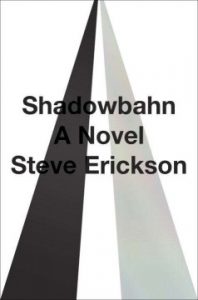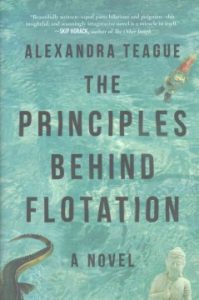And a top of the mornin’ to you, dear readers!

I’ve already seen plenty of green being worn around the Library today in honor of St. Patrick’s Day, which makes my heart happy. We’ve all, I’m sure, heard different stories about traditions that are meant to be performed on St. Patrick’s Day…I grew up with a lot of Irish relatives who taught me to throw salt over my shoulder to keep the Wee People distracted, and not to leave milk out because it attracts ghosts, so some of the newer traditions have been lost on me. So, in honor of the day, let’s take a look at the real St. Patrick, and what we are really commemorating today.
- St. Patrick’s acutal name was most likely Maewyn Succat. Though we don’t know too much about him, we’re pretty sure he was from what is now Wales…or maybe Scotland, and was captured by Irish pirates/brigands around the age of 16 and brought to Ireland as a slave, escaping via ship around six years later.
- He returned to Ireland after becoming a priest, and began converting local pagan inhabitants to Christianity. Many of the symbols associated with Ireland today, especially the shamrock, were symbols with Druidic power that Patrick co-opted as symbols of Christianity. That whole thing about him ‘driving the snakes out of Ireland’? It’s a veiled reference to Druids being driven out.

- The first St. Patrick’s Day Parade was held in New York on March 17, 1762, and referred to a soldiers’ parade (when they display their ability to march and stuff). It’s gotten a bit…bigger since then.
- For the love of all that is good and noble on this earth, don’t pinch people. Please. It’s not nice. And it didn’t start as a thing until the later part of the 19th century by Americans (some of whom were Irish immigrants). The explanation for this was that wearing green makes you invisible to leprechauns, so if you are not wearing green, other people get to pinch you on behalf of the leprechauns. Which is absurd. Leprechauns can always see you. And they are far too clever to resort to pinching you. And you are not a leprechaun (unless you are, in which case, fair play). So don’t pinch people. Today or any other day. Thank you.
- Go to the Library! Ok, this isn’t strictly a St. Patrick’s Day tradition, but libraries were and are critically important institutions around the world, as well as on the Irish island. The Linen Hall Library in Belfast became a repository of materials for all sides during The Troubles, with all sides tacitly agreeing that a library was a safe, non-sectarian place to collect their history. While there is an ongoing debate about staffing and funding in Libraries across the UK and Ireland, right now, one single library card will let you into every library in the Republic of Ireland. How cool is that? So why not come by, and enjoy a few of the books that are merrily performing jigs on our shelves today?

 Taduno’s Song: Nigerian author
Taduno’s Song: Nigerian author
 The World Remade: America in World War I: The US didn’t declare war until 1917, but it was certainly involved in the First World War from the very beginning. In this accessible and thought-provoking history, journalist G.J. Meyer takes us through the bitter debates within American politics and society over the war and the possibility of American military intervention, as well as the global conspiracies, policies, and plans that affected those decisions. His passion for understanding characters and personalities makes this story an engaging one that history buffs of all stripes will enjoy. There is always a concern with journalists writing history, as the tendency is to over-simplify matters for easy consumption. Meyer, however, does an impressive job outlining just how complicated and divisive a time this was in American history, and keeps a keen eye on the ramifications that the decisions made in 1917 have on us today. The Washington Post agrees, saying, in a really excited review, that this book is “Thundering, magnificent . . . a book of true greatness that prompts moments of sheer joy and pleasure . . . It will earn generations of admirers.”
The World Remade: America in World War I: The US didn’t declare war until 1917, but it was certainly involved in the First World War from the very beginning. In this accessible and thought-provoking history, journalist G.J. Meyer takes us through the bitter debates within American politics and society over the war and the possibility of American military intervention, as well as the global conspiracies, policies, and plans that affected those decisions. His passion for understanding characters and personalities makes this story an engaging one that history buffs of all stripes will enjoy. There is always a concern with journalists writing history, as the tendency is to over-simplify matters for easy consumption. Meyer, however, does an impressive job outlining just how complicated and divisive a time this was in American history, and keeps a keen eye on the ramifications that the decisions made in 1917 have on us today. The Washington Post agrees, saying, in a really excited review, that this book is “Thundering, magnificent . . . a book of true greatness that prompts moments of sheer joy and pleasure . . . It will earn generations of admirers.”
 Shadowbahn: I’ll be honest with you, I’m not entirely sure what to make of this book, dear readers. And that is precisely what makes it so exciting. Steve Erickson’s story begins 2021 with the Twin Towers suddenly reappearing…in the Badlands of South Dakota. To all the people who flock to visit them, including siblings Parker and Zema, who are traveling from L.A. to visit their mother in Michigan, the towers seem to sing–but everyone hears a different song. But as Parker and Zema drive on, taking a detour through a shadowland that doesn’t appear on any map, ghosts, spirits, and the neverborn begin to awake, lured and driven mad by the music of the towers. This is a story about music, about American culture, about what’s wrong with it–and full of hope for what might be made right again, and is being hailed as a wholly original kind of masterpieces by readers and critics across the country, with The New York Times Review of Books cheering that it is “compassionate, weird, unpredictable, jaunty. It’s sad, and it’s droll and sometimes it’s gorgeous … In this novel, Erickson has mobilized so much of what feels pressing and urgent about the fractured state of the country in a way that feels fresh and not entirely hopeless, if only because the exercise of art in opposition to complacent thought can never be hopeless”.
Shadowbahn: I’ll be honest with you, I’m not entirely sure what to make of this book, dear readers. And that is precisely what makes it so exciting. Steve Erickson’s story begins 2021 with the Twin Towers suddenly reappearing…in the Badlands of South Dakota. To all the people who flock to visit them, including siblings Parker and Zema, who are traveling from L.A. to visit their mother in Michigan, the towers seem to sing–but everyone hears a different song. But as Parker and Zema drive on, taking a detour through a shadowland that doesn’t appear on any map, ghosts, spirits, and the neverborn begin to awake, lured and driven mad by the music of the towers. This is a story about music, about American culture, about what’s wrong with it–and full of hope for what might be made right again, and is being hailed as a wholly original kind of masterpieces by readers and critics across the country, with The New York Times Review of Books cheering that it is “compassionate, weird, unpredictable, jaunty. It’s sad, and it’s droll and sometimes it’s gorgeous … In this novel, Erickson has mobilized so much of what feels pressing and urgent about the fractured state of the country in a way that feels fresh and not entirely hopeless, if only because the exercise of art in opposition to complacent thought can never be hopeless”.
 The Principles Behind Flotation: And speaking of books with bizarre premises, this delightfully quirky coming-of-age novel features a magical sea that appears overnight in a cow pasture in Arkansas. Around that sea grows a religious order that puts on passion plays for tourists about the sea’s appearance and a thriving tourist destination, but the Sea’s owner has no interest in allowing any one to study the Sea of Santiago itself, which is hard news for A.Z. McKinney, whose lifelong dream has been to chart the sea’s depths and wring all its secrets from it, drop by drop (she resorts to carrying samples home in her bathing suit). But for all of A.Z.’s big dreams, she is still a teenager, and still trying to figure out how she fits in the world, and on dry land, let alone on the great and mysterious Sea. Alexandra Teague’s novel is one of the weirdest I’ve read in a while, but also one of the most fun, defiantly inventive, and strangely moving. Also, there are lots of scenes set in a library (where A.Z.’s mom works), so that is always a plus. Romantic Times Book Reviews agrees, giving this one a Top Pick rating, calling it “A rich, insightful, ambitiously inventive coming‐of‐age tale that will fire the imagination and capture the heart . . . The delightfully quirky details of this setting combine to create a richly textured world that readers will find difficult to leave behind, and the beautifully flawed and fully realized characters will linger long after the final page has turned.”
The Principles Behind Flotation: And speaking of books with bizarre premises, this delightfully quirky coming-of-age novel features a magical sea that appears overnight in a cow pasture in Arkansas. Around that sea grows a religious order that puts on passion plays for tourists about the sea’s appearance and a thriving tourist destination, but the Sea’s owner has no interest in allowing any one to study the Sea of Santiago itself, which is hard news for A.Z. McKinney, whose lifelong dream has been to chart the sea’s depths and wring all its secrets from it, drop by drop (she resorts to carrying samples home in her bathing suit). But for all of A.Z.’s big dreams, she is still a teenager, and still trying to figure out how she fits in the world, and on dry land, let alone on the great and mysterious Sea. Alexandra Teague’s novel is one of the weirdest I’ve read in a while, but also one of the most fun, defiantly inventive, and strangely moving. Also, there are lots of scenes set in a library (where A.Z.’s mom works), so that is always a plus. Romantic Times Book Reviews agrees, giving this one a Top Pick rating, calling it “A rich, insightful, ambitiously inventive coming‐of‐age tale that will fire the imagination and capture the heart . . . The delightfully quirky details of this setting combine to create a richly textured world that readers will find difficult to leave behind, and the beautifully flawed and fully realized characters will linger long after the final page has turned.”
 The Book Thieves: The stories of how Nazis looted the museums, galleries, and private collections of Europe has been well told in film and in print. But what we don’t talk about as much is how many books the Nazis stole. Not to burn–though they did plenty of that–but to hoard, with a plan to wage intellectual warfare against the very people from whom these books were stolen: Jews, Communists, Liberal politicians, LGBT activists, Catholics, Freemasons, and many other opposition groups. But when the war was over, most of the books were never returned. Instead many found their way into the public library system, where they remain to this day. But there is a team of librarians in Berlin who are working through their library system to find stolen books and return them–and Anders Rydell tells their story, and his own, in this heartbreaking, infuriating, hopeful, and redemptive story. This is a book about history, about heroism, and about Rydell’s journey across Europe to return one book to its rightful family–the only item that survived its owner’s murder. This is a book for book lovers everywhere, and a shatteringly powerful story about fascism, hatred, and hope. A review from Rydell’s home country of Sweden states that his work “constitutes a solid mapping of the quiet work being done in Berlin, Vilnius, Prague, Paris and other cities. The author tells of the monstrosities committed in the best possible manner. He mixes his library visits and historical background with a consistently confident tone. It might appear cynical to talk about tone here, but Rydell’s at times beautiful, at times matter-of-fact and restrained writing does wonders for the reader’s engagement. Reality as it has been – and is today – does not have to be added to with emotionally loaded pointers.”
The Book Thieves: The stories of how Nazis looted the museums, galleries, and private collections of Europe has been well told in film and in print. But what we don’t talk about as much is how many books the Nazis stole. Not to burn–though they did plenty of that–but to hoard, with a plan to wage intellectual warfare against the very people from whom these books were stolen: Jews, Communists, Liberal politicians, LGBT activists, Catholics, Freemasons, and many other opposition groups. But when the war was over, most of the books were never returned. Instead many found their way into the public library system, where they remain to this day. But there is a team of librarians in Berlin who are working through their library system to find stolen books and return them–and Anders Rydell tells their story, and his own, in this heartbreaking, infuriating, hopeful, and redemptive story. This is a book about history, about heroism, and about Rydell’s journey across Europe to return one book to its rightful family–the only item that survived its owner’s murder. This is a book for book lovers everywhere, and a shatteringly powerful story about fascism, hatred, and hope. A review from Rydell’s home country of Sweden states that his work “constitutes a solid mapping of the quiet work being done in Berlin, Vilnius, Prague, Paris and other cities. The author tells of the monstrosities committed in the best possible manner. He mixes his library visits and historical background with a consistently confident tone. It might appear cynical to talk about tone here, but Rydell’s at times beautiful, at times matter-of-fact and restrained writing does wonders for the reader’s engagement. Reality as it has been – and is today – does not have to be added to with emotionally loaded pointers.”
Until next week, beloved patrons, happy reading, and Go mbeirimíd beo ar an am seo arís!
